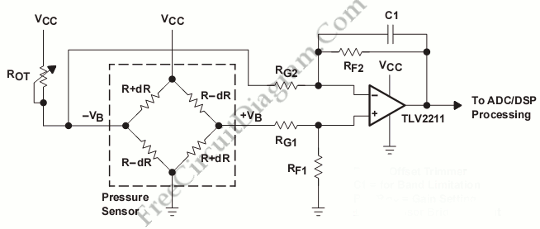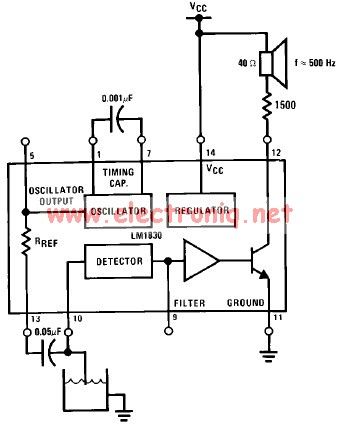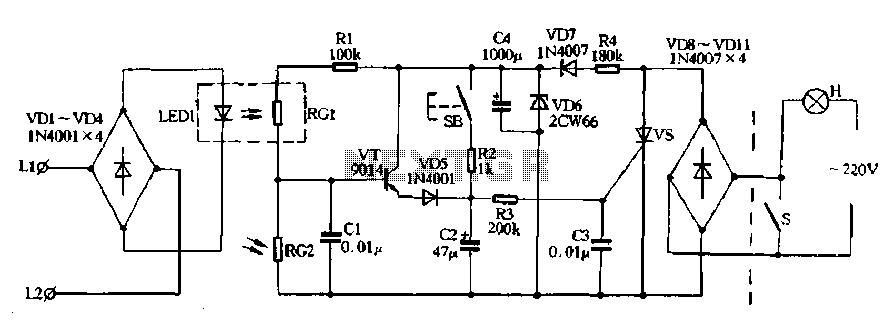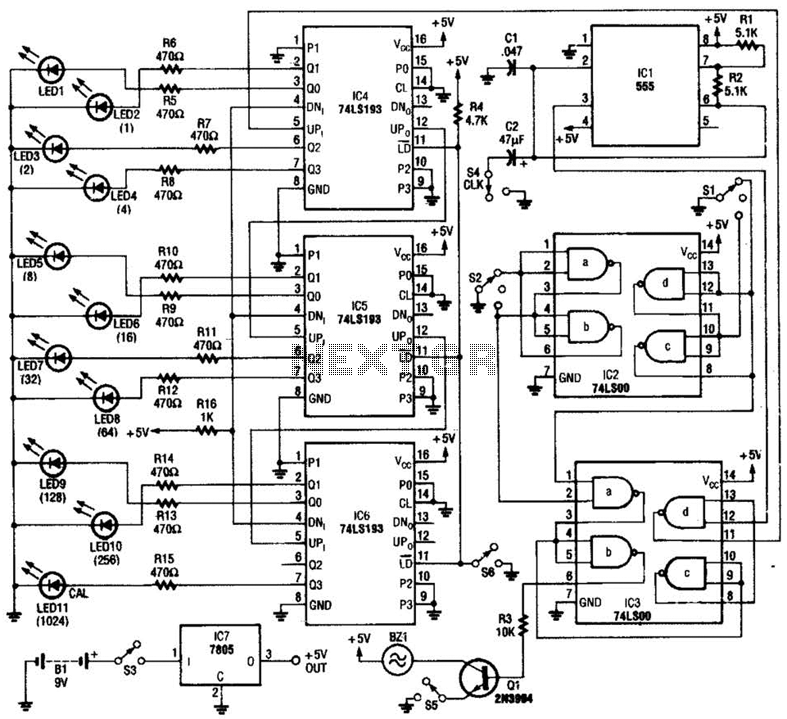
Pressure Sensor Signal Conditioning Circuit with Single Op-Amp

This is a pressure sensor signal conditioning circuit. It is a simple and inexpensive circuit due to its small geometry and the use of a straightforward pressure sensor.
The pressure sensor signal conditioning circuit is designed to convert the raw output signal from a pressure sensor into a more usable form for further processing or display. The circuit typically includes components such as operational amplifiers, resistors, capacitors, and sometimes analog-to-digital converters (ADCs) to enhance the signal quality and ensure accurate readings.
In a basic configuration, the pressure sensor generates a voltage output that corresponds to the applied pressure. This output may be weak and susceptible to noise, necessitating signal conditioning. An operational amplifier (op-amp) can be employed to amplify the sensor's output signal. The gain of the op-amp can be adjusted using feedback resistors, allowing for calibration to the specific range of pressure measurements required.
Filtering may also be incorporated into the circuit to eliminate high-frequency noise. This can be achieved using passive RC (resistor-capacitor) filters or active filters that utilize additional op-amps. The choice of filtering method depends on the specific application and the frequency characteristics of the noise present in the environment.
For applications that require digital processing, the conditioned analog signal can be fed into an ADC. The ADC converts the analog voltage into a digital signal, which can then be processed by microcontrollers or digital signal processors (DSPs) for further analysis, display, or control purposes.
Overall, the pressure sensor signal conditioning circuit plays a crucial role in ensuring accurate and reliable pressure measurements by improving the signal quality and making it suitable for subsequent electronic processing.This is pressure sensor signal conditioning circuit. It is simple and inexpensive circuit because it has small geometry and simple pressure sensor. It just uses. 🔗 External reference
The pressure sensor signal conditioning circuit is designed to convert the raw output signal from a pressure sensor into a more usable form for further processing or display. The circuit typically includes components such as operational amplifiers, resistors, capacitors, and sometimes analog-to-digital converters (ADCs) to enhance the signal quality and ensure accurate readings.
In a basic configuration, the pressure sensor generates a voltage output that corresponds to the applied pressure. This output may be weak and susceptible to noise, necessitating signal conditioning. An operational amplifier (op-amp) can be employed to amplify the sensor's output signal. The gain of the op-amp can be adjusted using feedback resistors, allowing for calibration to the specific range of pressure measurements required.
Filtering may also be incorporated into the circuit to eliminate high-frequency noise. This can be achieved using passive RC (resistor-capacitor) filters or active filters that utilize additional op-amps. The choice of filtering method depends on the specific application and the frequency characteristics of the noise present in the environment.
For applications that require digital processing, the conditioned analog signal can be fed into an ADC. The ADC converts the analog voltage into a digital signal, which can then be processed by microcontrollers or digital signal processors (DSPs) for further analysis, display, or control purposes.
Overall, the pressure sensor signal conditioning circuit plays a crucial role in ensuring accurate and reliable pressure measurements by improving the signal quality and making it suitable for subsequent electronic processing.This is pressure sensor signal conditioning circuit. It is simple and inexpensive circuit because it has small geometry and simple pressure sensor. It just uses. 🔗 External reference





